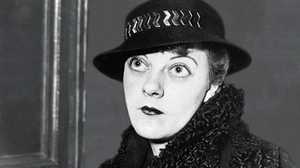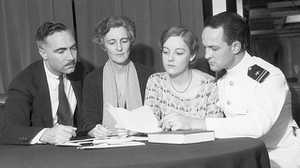The Massie Case and Hawai'i: A Timeline

1778
January 18: On his third and final voyage to the Pacific Ocean, British explorer Captain James Cook is the first European to visit the Hawai'ian Islands. He is welcomed by the islanders, but later tensions arise and he is killed in a skirmish with them.
1820
A group of Christian missionaries from Boston arrive in Hawai'i.
1828
Dr. Gerrit P. Judd arrives in Hawai'i as a medical missionary to treat diseases brought to Hawai'i by early explorers. Dr. Judd eventually becomes one of King Kamehameha III's haole (white) advisers.
1842
In the Tyler Doctrine, President John Tyler asserts that Hawai'i is within the United States "sphere of influence." His statement is a warning to European powers interested in controlling Hawai'i's strategic location.
1848
King Kamehameha III agrees to a mahele, or division, of Hawai'i's land. Hawaiian land has never been "owned," but the mahele, supported by Kamehameha's haole advisers, opens the door for foreigners to buy government land. By 1890, foreigners will hold 90 percent of Hawaiian land.
1866
Since the beginning of contact with Europeans, the Hawaiian population has been devastated by disease, famine and war. By 1866, only 20% of the pre-1778 population remains.
1887
King Kalakaua signs the "Bayonet Constitution" under pressure from the "Hawaiian League," a group of armed businessmen set on defending the interests of Hawai'i's haole landowners. The new constitution gives foreigners (excluding Asians imported to work in the sugar industry) the right to vote, puts in place an income restriction on the electorate, and takes power away from the king.
Hawai'i cedes Pearl Harbor Lagoon to the United States in the Reciprocity Treaty of 1887 in exchange for duty-free sugar, which benefits the haole sugar exporters.
1893
Queen Lili'uokalani surrenders her throne at gunpoint to the United States government. A haole provisional government claims control of the republic, and the U.S. Minister to Hawai'i declares Hawai'i a U.S. Protectorate, submitting a request for annexation. Instead, President Grover Cleveland orders an investigation into the queen's surrender. Upon reading the results of the inquiry, Cleveland tells Congress, "believing... that the United States could not, under the circumstances disclosed, annex the Islands without justly incurring the imputation of acquiring them by unjustifiable methods, I shall not again submit the treaty of annexation to the Senate."
1894
President Cleveland attempts to restore Queen Lili'uokalani to her throne by asking the Provisional Government to relinquish its illegally obtained power. The Provisional Government refuses and instead creates the Republic of Hawai'i on July 4, 1894, declaring Sanford B. Dole president.
1898
President William McKinley annexes Hawai'i. The Hawaiian public never votes on the question of annexation. Sanford B. Dole is recognized as governor of the Territory of Hawai'i in a ceremony at Iolani Palace on August 12, 1898. The American flag replaces the flag of Hawai'i.
1900
The U.S. Congress passes the Organic Act, a law defining Hawai'i's territorial government. The act grants U.S. citizenship to all persons who were citizens of Hawai'i as of August 12, 1898, and includes universal male suffrage.
1909
Pearl Harbor dredging and building contracts are granted to haole-owned businesses. At the time, the contracts are the largest military contracts ever awarded.
1919
August 21: The recently completed drydock at Pearl Harbor Naval Station is dedicated.
1931
September 12: Thalia Massie claims she was assaulted by a group of Hawaiian young men in the late night hours of September 12. Before September 13 dawns, the young Navy wife will tell her story three times, each time saying that she cannot identify her assailants or their car. In the coming months, Massie, the defendants, and eyewitnesses will offer perplexingly contradictory testimony when describing the evening's events.
September 13: Police arrest five suspects in the Massie case: Horace Ida, Benny Ahakuelo, Joseph Kahahawai, Henry Chang and David Takai. They are accused of assaulting Thalia Massie. A police report filed at 1:35am has implicated Horace Ida on another charge. One of the four passengers in Ida's car has been in a fight with a Native Hawaiian woman, who reports Ida's car and license plate number. By virtue of circumstance, the police immediately suspect Ida and his four friends of assaulting Thalia Massie.
September 14: Hawai'i's two major English language newspapers, the Honolulu Advertiser and the Honolulu Star-Bulletin, report the assault without naming Thalia Massie. Instead, the newspapers describe her as a "woman of refinement and culture" and the suspects as "fiends."
November 16: The trial opens in the old Territorial Courthouse. Two days later, Thalia Massie testifies as the first witness for the prosecution. She states that she noticed the license plate of the car and that she recognized Ben Ahakuelo from a gold filling she saw in his mouth while she was in the car. Her testimony recalls much more detail than she revealed initially to police.
December 6: After ninety-seven hours of deliberation -- the longest in Hawai'i court history — the jury informs the judge that it is unable to reach a verdict in the Massie case. The judge declares a mistrial. The story breaks in the mainland U.S. press as a miscarriage of justice, and many mainland Americans clamor for reform in what the press portrays as savage Hawai'i.
December 12: A vigilante group of Navy men force Horace Ida into their car in front of a beer shop in Ida's neighborhood. They drive him to the Nuuanu Valley and beat him with belt buckles until he pretends to be unconscious. Meanwhile, police track down and guard the other four suspects, who are all free on bail pending a new trial.
1932
January 8: Thalia's mother, Grace Fortescue, her husband, Tommy Massie, and two other Navy men, Albert Jones and Edward Lord, kidnap Massie case suspect Joseph Kahahawai as he leaves the Judiciary Building with his cousin. Remembering what happened to Horace Ida, the cousin immediately tells a probation officer, who alerts Honolulu police and the Shore Patrol. Meanwhile, attempting to force a confession, one of the kidnappers shoots Joseph Kahahawai. Kahahawai's dead body is placed in a bathtub to clean off the blood before the kidnappers decide to drive to the famous blowhole at Koko Head. There, the body and evidence can be tossed into the churning water to be demolished on the rocks before disappearing into the sea. An alert police officer notices a car driving past with its window shade pulled down. Seeing the drawn shade, he pursues the car, discovering the four kidnappers with Kahahawai's body. They are arrested for kidnapping and murder.
January 9: In response to the sensational newspaper accounts of the "Honor Slaying," supporters send flowers and notes of sympathy to the Navy ship where Grace Fortescue and the other defendants are being held.
January 22: A grand jury assembles to hear details of the murder and determine whether there is evidence sufficient for a trial. The grand jury initially returns a "no bill" vote, failing to indict the murderers. Judge Albert Christy does not accept their vote and reminds the jurors that their job is not to determine the guilt or innocence of the murderers, but simply to vote that there is sufficient evidence to try the accused. The grand jury continues to stall until January 26, when Judge Christy refreshes the jurors' memories of their responsibilities and of the overwhelming amount of evidence against the accused. The grand jury indicts the foursome on the charge of second-degree murder.
April 4: The Territory vs. Grace Fortescue, et al. opens for jury selection. Celebrity attorney Clarence darrow represents the defendants. Jack Kelley represents the Territory, with Judge Charles Skinner Davis presiding. The jury is finalized seven days later, comprised of seven Caucasians, two Chinese, one Portuguese, and three Hawaiians.
April 20: Thalia Massie testifies for the defense. She recounts the events of the night of September 12, this time adding that she told her husband that Joseph Kahahawai beat her more than the other men.
April 27: Darrow delivers a four-and-a-half-hour closing argument that is broadcast over radio across the U.S. Kelley follows with his own summation. The jury is sent to deliberate at 5:00pm.
April 29: Just over 48 hours later, the jury returns with a verdict. The jury finds the defendants guilty of manslaughter and recommends leniency. The courtroom and the American audience are shocked that the Navy group have been convicted.
May 4: Judge Davis sentences the defendants to the mandatory sentence for manslaughter in Hawai'i: ten years hard labor. Governor Lawrence Judd, under pressure from the Navy and the U.S. government, immediately commutes the sentence to one hour served in his office. The convicted killers and Thalia Massie walk across the street to the governor's office to serve their time.
May 8: Thalia Massie, Grace Fortescue, and Tommy Massie depart Hawai'i on the Malolo, steaming to San Francisco. By boarding the ship, Thalia avoids being served a summons to appear in the retrial of the four surviving men she claimed had assaulted her. The retrial will never take place.
1941
December 7: Nine years after the Massie case, the Japanese attack the U.S. Navy at Pearl Harbor, precipitating America's entry into World War II.
1959
June 27: A majority of Hawai'i's electorate vote to accept statehood, which has been offered by the United States. Many Native Hawaiians vote against it, however.
August 21: Hawai'i becomes the 50th U.S. state. President Dwight Eisenhower signs the proclamation and orders the stars on the existing American flag rearranged. He addresses the American people by radio, saying, "we will wish for [Hawai'i's] prosperity, security, and happiness."







